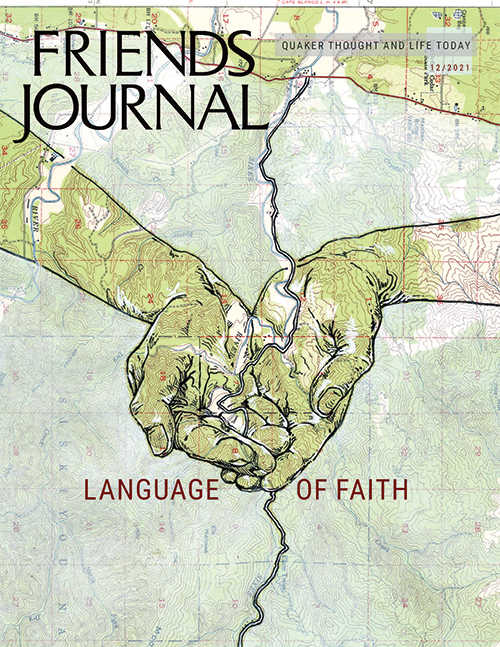Embracing Language That Reflects Our Values
I’ve thought about language almost every day of my adult life. This is for several specific reasons, the most significant of which is that I was a professor and administrator in the field of deaf education for 50 years. When children are deaf, they usually have difficulty acquiring spoken language in the same manner as their hearing peers. With the use of high-powered hearing aids and cochlear implants, many children are able to develop intelligible speech, sometimes even without much of an accent. And some deaf people might not use speech or have speech that is hard for hearing people to understand, but their language is accurate, complex, and grammatically perfect. So, speech and language abilities are not always the same. Complex, grammatically accurate, abstract language can be difficult to learn. Usually the vocabulary and grammar of an oral language have to be specifically taught to children who can’t hear well enough to pick up all the words or all the parts of words—like articles, pronouns, or the third-person “s” on verbs like “runs.” As a professor in deaf education and a mother of two deaf children, I have always paid attention to single words, figurative expressions (“hold your horses”), and grammatical constructions (“you have been to the store”).

Photo by Tada Images
Part of the testimony of equality for me is that everyone has access to communication. People who have different abilities deserve equal opportunity to initiate, comment, question, and turn-take in a discussion; deliver and comprehend messages in meeting for worship; and understand and contribute to meeting for business. Learning how to use a transcription system, like the one available on Zoom, or arranging for and paying a sign interpreter are part of the duties of those hosting a session.
Some meetings have installed amplification systems of various sorts to assist in auditory access, but sometimes this is not enough. For my children, both of whom wore cochlear implants as children, it was not. Penn Valley Meeting in Kansas City, Missouri, paid a sign interpreter for years so my children could understand and contribute in First-day school and meeting for worship. In the years that my family went to the Friends General Conference Gathering, a paid interpreter was provided who used our home language of signed English for the morning children’s program. My husband and I were given stipends to interpret other parts of the day.
Now that many meetings and gatherings are provided on Zoom, the option of transcription can be made available. Over the last year, I have asked that those managing the various gatherings of Friends know how to turn it on and announce its availability frequently, so that those who might benefit from it know it’s available and how to access it. Zoom transcription works best when Friends speak without interrupting each other and allow space between different speakers. This is true when speech is interpreted, too. Both of these tools don’t work as well if people are simultaneously talking, praying, praising, or singing. I know this because for the last six years, I have also attended a Pentecostal Sunday service, and for the last three of those years, there has been a deaf member. In the time of COVID-19, the service has been on Zoom. If I am available, I interpret, but if I am not, the host utilizes the transcription option. The voice-to-text system does a remarkable job, but, not unlike the limitations of one pair of hands, when several people are simultaneously speaking or singing, what is transcribed is incoherent.
Another way on Zoom to assist those who use a different language is to have participants clearly identified. This can occur by asking those on video to name themselves if they haven’t, and by announcing who is using a particular phone number and other such identifiers in the chat. In addition, it is not always obvious who is talking on Zoom. Adding a hand wave when Friends say their names and meetings before they begin talking gives a person who doesn’t hear well a helpful visual clue. During in-person sessions, standing before speaking or using a “talking stick” are ways that speakers can be identified nonverbally.
The language we use ourselves and the language we tolerate from others is a mirror of our values. It is not true that names or words, as the nursery rhyme goes, “can never hurt.” They can absolutely hurt.
A second reason that I frequently think about language is because of the Friends peace testimony. I don’t remember who first called my attention to the violence in our language, but for about a decade now, I have been trying conscientiously to avoid phrases that use metaphors involving killing and war, such as “killer smile,” “pick your battles,” “it beats me,” and so forth. Once I started noticing these kinds of expressions, I realized the degree to which military and violent expressions have crept into the English language. I often have to stop what I’m saying to think of how to replace a common vocabulary term or phrase of violence. Sometimes I do this aloud to model a more peaceful language choice. I use what some people know as “self talk,” a type of language behavior that is used in deaf education and elsewhere to aid language development in children. Self talk is a way of correcting violent language in my own speech without making a value judgement about the expressions that other people are using. For example, if I say something that could be expressed more peacefully, I correct myself out loud, saying something like, “Oh, I didn’t mean to say that,” state the alternative and explain, “I’m trying to take the violence out of my language.” An actual example is when I am giving a talk with powerpoint slides and say, “If you read the bullet points here—oh, I mean the speaking points. I’m trying to take the violence out of my language.”
As Friends we are called to name things for what they are, and research has demonstrated that this all matters. For instance, this from a 1991 Los Angeles Times article:
A March 25 Times Mirror poll showed that the euphemism “collateral damage” used in place of “civilian casualties” was startlingly effective in blunting public sentiment for Iraqi civilian dead. Only 21 percent of those polled were “very concerned” about the amount of “collateral damage” produced by the war, while 49 percent of the respondents were “very concerned” about “the number of civilian casualties and other unintended damage” in Iraq.

Young child making the sign language sign for “I love you.” Photo by Chatchai.
For the last six years I’ve worshiped in both a Quaker and a Pentecostal religious setting (see “A Pentecostal Quaker’s Spiritual Journey,” FJ Aug. 2020). My attendance in both of these faith groups has resulted in my becoming much more flexible in both receptive, internal listening and quaking (in the manner of Friends) to that of God, and in expressive shouting, whispering, preaching, expressive prayer, hand raises, or dancing around the sanctuary to express (in Pentecostal ways) gratitude and praise. Over the years, I have become very much “unstuck” in how I express my faith. For as Acts suggests, we hear in our own language, in our own manner: “And how is it that we hear, each of us in his own native language?”(Acts 2:8 ESV) So in my discernment around language, I have seen that whether someone is communicating with God internally or with a tambourine, God or Spirit hears it all. It is sometimes “a sound like a mighty rushing wind [that fills] the entire house where [we are] sitting” (Acts 2:2 ESV), and it is sometimes “a still, small voice” (1 Kings 19:12 KJV). God gives “a gentle whisper,” a nudge (1 Kings 19:12 ESV). In the words of Bishop G.E. Paterson (on YouTube), “I’m gonna talk so God can use me, anywhere, any time!” For I am called to a higher place, no matter what form, and have come to see that it is the authenticity of the worship that is important.
Words can hurt and words can educate. I identify as a woman, so I never fail to notice when someone uses “man” or “men” to mean all people. Another example is how, because of my training in special education, I avoid expressions that involve a disability and are negative (e.g., “turning a deaf ear” or “having a lame idea”). I appreciate person-first language, such as saying “a child who is autistic” rather than “an autistic child”; “a person who is experiencing homelessness” rather than “a homeless person.” For much the same reason, many meetings no longer use the committee name of ministry and oversight because of the connotations related to slavery. I also put my pronouns after my name on Zoom no matter what conference, church, meeting, etc., as a silent witness that gender isn’t binary. I make mistakes in assuming the pronouns of others, but I am getting better at understanding and using “they” rather than a gender specific pronoun that I am associating in my mind with the appearance or tone of voice that I am perceiving.
The language we use ourselves and the language we tolerate from others is a mirror of our values. It is not true that names or words, as the nursery rhyme goes, “can never hurt.” They can absolutely hurt. And that is why you might always let your communication always be gracious.





Comments on Friendsjournal.org may be used in the Forum of the print magazine and may be edited for length and clarity.